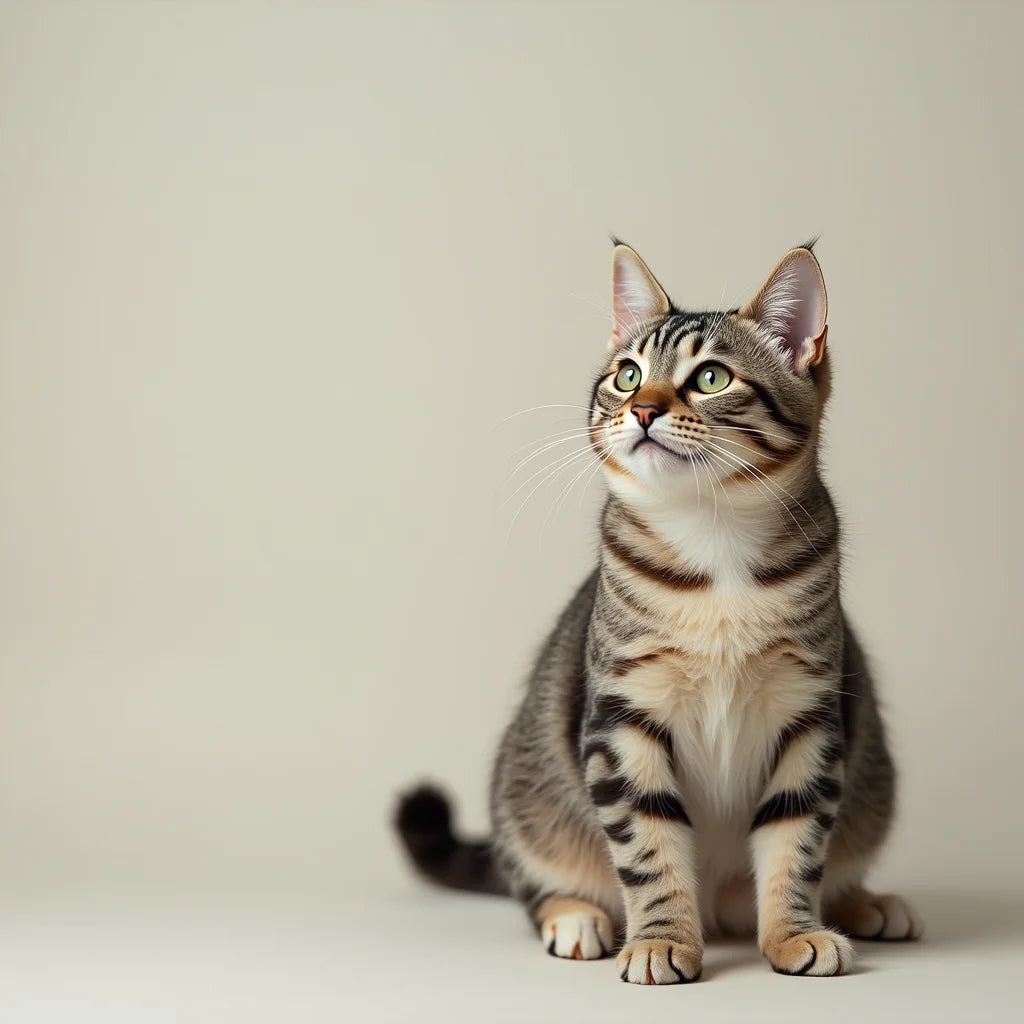
Cat Behavior Decoded Practical Tips for a Happier Pet
Updated on: 2025-10-26
- Cat care basics for a calm home
- What a cat needs every day
- Key benefits of a consistent cat routine
- Step-by-step guide: build a gentle cat care plan
- Understanding cat behavior: Why do cats purr?
- Common signs of contentment
- Other cat sounds and what they may mean
- Feeding your cat: How often should I feed my cat?
- Portion and timing basics
- Hydration and slow changes
- Preventing scratches: how to stop a cat from scratching furniture
- Choosing the best cat food for indoor cats
- Reading labels and indoor needs
- Transitioning to a new food gently
- Common cat breeds and personality clues
- Playful, active cat breeds
- Calm, quiet cat breeds
- FAQ about cat care and behavior
- Summary: a kinder, cat-friendly home
- About the author
Cat care basics for a calm home
A cat brings warmth and personality to any space, and a few small habits can help this feline friend feel safe and content. In the first days, offer predictability: quiet spots for rest, steady meals, fresh water, and a clean litter area. Gentle play helps a kitty release energy and builds trust. Short, positive interactions are often more effective than long sessions, especially with a shy kitten. If you keep your routine kind and consistent, you will likely notice more relaxed body language and calmer behavior.
What a cat needs every day
- Fresh water, accessible at all times.
- Steady meals suited to age, activity, and indoor lifestyle.
- Clean litter with low scent changes.
- Play sessions for mental and physical enrichment.
- Scratching options to protect furniture and support healthy nails.
- Safe, quiet places to nap and observe.
If you are gathering essentials, you may find ideas for enrichment and daily comfort on the The Meow Haus homepage, where many cat parents start their journey.
Key benefits of a consistent cat routine
- Reduces stress for the cat and for you by setting gentle expectations.
- Supports healthy eating habits with steady feeding times.
- Encourages play and exercise, which can reduce restlessness in indoor cats.
- Helps prevent unwanted scratching by guiding attention to approved surfaces.
- Builds trust; a predictable routine signals that home is safe.
Step-by-step guide: build a gentle cat care plan
Step 1: Set up safe spaces
Offer one quiet room with bedding, a litter area, and water. Add vertical space like a sturdy shelf or tree so your cat can observe from above. Keep the setup stable for several days before you rearrange anything.
Step 2: Create a simple schedule
Choose meal times that fit your day. Add two or three short play sessions. Keep lights low in the evening to support calm time. Small, daily rhythms can help any kitty feel secure.
Step 3: Place scratching options
Set a sisal post near favorite nap spots and a horizontal cardboard pad near paths your cat already uses. Praise and reward when your cat uses them. This strategy can reduce the urge to scratch the couch.
Step 4: Rotate enrichment
Offer simple toys and rotate them each week to keep curiosity alive. Wand toys, crinkle tunnels, and puzzle feeders can add variety without overwhelm.
Step 5: Build trust with gentle social time
Sit nearby, speak softly, and let your feline approach first. Slow blinks and short sessions help a shy cat feel in control. Over time, extend play as your cat shows comfort.
For more ideas on routines and enrichment, you can browse the Blog for patient, practical tips.
Understanding cat behavior: Why do cats purr?
Many people ask, “Why do cats purr?” While the experience is soothing, purrs can have several meanings. A relaxed cat often purrs during gentle contact or while resting. Some cats also purr during moments of uncertainty, perhaps as a self-soothing behavior. Context matters: look at the whole picture—ears, eyes, body posture, and tail. When you see loose muscles, slow blinks, and a steady breath, a purr likely signals comfort.
Common signs of contentment
- Slow blinking and soft eye shapes.
- Loose, stretchy body language on a comfortable surface.
- Upright tail with a gentle curve when approaching you.
- Even, quiet breathing and calm grooming.
Other cat sounds and what they may mean
- Chirps or trills: Friendly greeting or excitement.
- Meows: A request for attention, food, or a door to be opened.
- Hisses or growls: A polite warning to create space. Kindly give distance.
Feeding your cat: How often should I feed my cat?
“How often should I feed my cat?” depends on age, activity, and your household rhythm. Kittens usually appreciate more frequent, smaller meals due to their rapid growth. Many adult indoor cats do well with two scheduled meals per day. Consistency helps your kitty anticipate mealtime and may support calm behavior around the bowl.
Portion and timing basics
- Choose a steady time in the morning and evening so your cat knows what to expect.
- Use a kitchen scale or measuring scoop for accuracy.
- If you offer treats, keep them modest so they do not replace balanced meals.
Hydration and slow changes
Place water bowls in quiet locations away from litter and food. Many cats prefer wide, shallow bowls. When shifting foods or schedules, make small, gradual changes over several days to support comfort and routine.
If you are exploring tools that support steady feeding routines, you might find helpful options in Shop all.
Preventing scratches: how to stop a cat from scratching furniture
It is natural for a cat to scratch. It stretches muscles, maintains nails, and marks a spot with scent. Rather than stopping the behavior, it may help to guide it. Place appealing scratchers where your cat already spends time—near a window, next to a nap spot, or on the way to the sofa. Praise and reward when your feline uses them. If the couch is a favorite target, cover that area temporarily with a fabric protector or a smooth barrier while the new habit forms. Gentle redirection is often more effective than scolding.
- Offer both vertical and horizontal scratching surfaces.
- Use sturdy bases so scratchers do not wobble.
- Refresh with a sprinkle of catnip if your kitty enjoys it.
- Trim nails with care and patience, a little at a time.
Choosing the best cat food for indoor cats
Indoor life can be cozy, and diet plays a key role in balance. The best cat food for indoor cats supports steady energy, healthy digestion, and satisfaction between meals. Many indoor formulas prioritize digestible proteins and fiber. A kitten will need a different profile than an adult cat; age and activity guide your choice. Read labels with a calm, curious eye and notice how your cat responds over several weeks.
Reading labels and indoor needs
- Look for clear protein sources in the first ingredients.
- Check the feeding guide and use it as a starting point.
- Note stool quality, coat condition, and overall energy as gentle signals of how a food suits your cat.
Transitioning to a new food gently
Shift in small steps: start with most of the current food and a little of the new, then adjust the ratio every couple of days. This gradual approach is kind to sensitive stomachs and helps your kitty adapt.
For inspiration on enrichment and home-ready essentials that complement feeding routines, you can read more on About us.
Common cat breeds and personality clues
Every cat is an individual, yet some cat breeds are known for broad tendencies. These are not rules; they are starting points to understand how to support comfort and play. Whether you share your home with a lively kitten or a more reserved adult, noticing preferences can help you choose toys, scratchers, and rest zones that feel right.
Playful, active cat breeds
- Abyssinian: Curious and smart; often enjoys climbing and puzzle play.
- Bengal: Athletic and energetic; may prefer active, daily play.
- Siamese: Social and vocal; thrives on interaction and routine.
Calm, quiet cat breeds
- British Shorthair: Easygoing and steady; tends to enjoy cozy spaces.
- Ragdoll: Affectionate and relaxed; often content with gentle play.
- Persian: Calm and observant; appreciates predictable comfort.
Again, personality varies. A mixed-breed kitty can be just as playful or calm as any pedigree feline. Observe, adjust, and celebrate what your cat enjoys most.
FAQ about cat care and behavior
Why do cats purr?
Purring often appears during moments of comfort, such as relaxed petting or rest. Some cats also purr when uncertain, which may be a way to self-soothe. Watching body language—soft eyes, loose posture, steady breathing—can help you read the mood behind the sound.
How often should I feed my cat?
Most adult indoor cats do well with two set meals per day. Kittens usually need smaller, more frequent meals. Choose a pattern that fits your day and keep changes gradual so your cat feels secure.
How can I stop a cat from scratching the couch?
Guide the behavior rather than stop it. Place sturdy scratchers near favorite spots, reward their use, and cover tempting furniture temporarily while the habit shifts. Offer both vertical and horizontal options so your cat can choose what feels best.
What is the best cat food for indoor cats?
Look for clear protein sources, balanced nutrients for age and activity, and a feeding guide that supports steady portions. Observe how your cat responds over time and adjust gently if needed.
What are simple ways to enrich a kitten’s day?
Short play bursts with wand toys, soft tunnels, and food puzzles can keep a kitten curious without overwhelm. Rotate toys weekly and keep rest spaces quiet to support healthy sleep.
Summary: a kinder, cat-friendly home
A peaceful home for a cat grows from small, steady choices: consistent feeding, respect for natural behaviors like scratching, and patient play. Offer variety, observe your feline’s preferences, and adjust with care. With a gentle routine, your kitty will likely feel safe, engaged, and ready to share many calm moments by your side.
About the author
Sage Winters writes about compassionate, everyday pet care with a focus on simple routines and stress-free homes. The goal is to help cat parents feel confident and calm while honoring each cat’s unique personality.

Sage is a design-obsessed cat parent focused on turning “pet gear” into purposeful décor. At MeowHaus, Sage covers styling guides, enrichment setups, and buyer’s tips to help you ditch carpet towers for furniture-grade pieces. Off the blog, you’ll find Sage scouting textures, testing scratchables, and sipping espresso under a sun-soaked window ledge.
